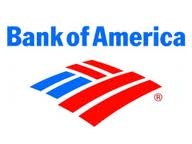On this day in economic and business history …
Lehman Brothers filed for bankruptcy protection early in the morning on Sept. 15, 2008, after failing to find any company willing to acquire its immense liabilities. The investment bank’s $613 billion in debts and $639 billion in reported assets set a record for the largest bankruptcy in American history, and as the filing arrived so soon after the federal bailouts of Fannie Mae and Freddie Mac, it marked a turning point in investor attitudes toward the unfolding financial crisis.
This unprecedented bankruptcy, combined with reports that Bank of America Corp (NYSE:BAC) had bought Merrill Lynch at the fire-sale price of $50 billion the previous day, sent financial markets into a panic. The Dow Jones Industrial Average (INDEXDJX:^DJI) closed down 4.4%, fully into bear-market territory. The Federal Reserve and other central banks around the world leapt into the fray to make deep wells of liquidity available to floundering financial institutions. Shares of struggling insurer American International Group Inc (NYSE:AIG), which would soon receive bailouts eventually totaling $68 billion to avoid compounding the Lehman problem, collapsed by more than 50% during the day as investors came to terms with the grim reality of the situation.
Lehman had put itself in a truly precarious position. Leverage ratios in excess of 30-to-1 meant that a 4% decline in the firm’s assets would wipe out its equity entirely. That was all but inevitable when the overheated housing market finally cooled. By the summer of 2008, it became obvious that Lehman was in trouble — five days before its bankruptcy, the investment bank announced a $3.9 billion quarterly loss.
Regulators had watched Lehman for months as the crisis unfolded, but some combination of bailout fatigue, insufficient resources, ignorance, and hubris prevented action when it would have been able to arrest the company’s slide. After promising $200 billion to Fannie and Freddie, and after funneling many billions more into other financial rescues and stimulus efforts, the Fed told Wall Street that it would have to solve its own problems. Shortly before bankruptcy, desperate Lehman executives reached out to Barclays for a last-minute buyout, but when the British bank stepped back, there was nowhere else to go.
From that point on, the market entered the worst days of the crisis. The Dow Jones Industrial Average (INDEXDJX:^DJI)’s Sept. 15 closing value of 10,917.51 points was already 23% lower than its 2007 peak, but the financial chaos caused by Lehman’s bankruptcy sent the sell-off into overdrive. In the six months that followed, to the lowest point of the crash, the Dow Jones Industrial Average (INDEXDJX:^DJI) fell 40% lower than its Sept. 15 level and 54% below its pre-crisis peak.
Three years after Lehman’s collapse, the Levy Economics Institute at Bard College released a study with staggering implications — the federal government’s total crisis-related obligations added up to $29.6 trillion. Direct bailout disbursements are comparatively modest — ProPublica estimates the total lent out by the Troubled Asset Relief Program to be $608 billion. Could either of these staggering sums have been kept at a lower level if the Fed had stepped in to save Lehman from itself? We’ll never know. That’s a subject for alternative-history writers now.
Neither of the two surviving financial institutions at the heart of the Sept. 15, 2008, panic had fully recovered five years later. Bank of America Corp (NYSE:BAC), which received $45 billion in bailout funds, remains nearly 50% below its closing value at the end of Sept. 15. American International Group Inc (NYSE:AIG), which appeared far more distressed at the time, has been clawing its way back at an impressive pace, but it still remains about 20% below its Sept. 15 closing price.
Find it online
You can find virtually any information you want about Lehman Brothers, or pretty much anything else, by looking it up on Google Inc (NASDAQ:GOOG). The nonsensical word that became a synonym for “search,” and the site that became a default gateway to information for most of the world’s Web surfers, were created on Sept. 15, 1997, when Larry Page and Sergey Brin registered the google.com domain, a year before Google itself had even become an actual company. Today, after 15 years of operation, Google Inc (NASDAQ:GOOG)’s search engine remains by far the most popular on the Internet. Its share of worldwide desktop Web searches is usually around 70%, and it completes nine out of every 10 searches made from mobile devices.
You can’t lose weight if you’re dead
The costliest drug recall in history began on Sept. 15, 1997, when Wyeth predecessor American Home Products withdrew the two types of pills comprising fen-phen (fenfluramine and phentermine) from the market at the FDA’s request.
The popular anti-obesity combination’s component parts had been available since the 1970s. However, fen-phen as a single treatment had only exploded into the public consciousness in 1992, when pharmacology professor Dr. Michael Weintraub first published the results of a four-year weight-loss study conducted on 121 obese patients. The patients, most of whom were women, lost an average of 15% of their body weight, which had been 200 pounds on average at the start of the trials. Anyone struggling to lose weight can tell you that this much weight loss is indeed a big deal, and interest soon ran so high that some doctors set up fen-phen mills to dispense doses to thousands of patients.
In 1995, Wyeth petitioned the FDA to approve a more effective form of fenfluramine called dexenfluramine. Its trials had lasted only a year and turned up the distressing possibility that this improved drug increased the risk of a potentially fatal heart condition. A fierce debate raged in the FDA’s approval committee: Did the benefit of helping millions lose weight outweigh what was seen as a one-in-a-million risk? The committee agreed that it did, and the drug was approved in 1996. Problems began to crop up almost immediately, as The New York Times‘ Gina Kolata wrote the week after the recall:
[After approval] dexfenfluramine sales soared and it was taken by a total of two million Americans, said Audrey Ashby, a spokeswoman for Wyeth.
Then, in July of this year, doctors at the Mayo Clinic in Rochester, Minn., reported that 24 women taking fenfluramine or dexfenfluramine developed a rare and gravely serious heart valve abnormality. The F.D.A. asked doctors across the country to report any patients with similar valve damage and soon accumulated more than 100 cases.
This month, five medical centers independently told the F.D.A. that they had examined a total of 291 patients, mostly women, taking one of the two drugs and found that a third of them had damaged aortic or mitral valves, although none had symptoms like tiredness or shortness of breath.
Up to 6.5 million people were thought to have taken the drug combination before its recall. Pfizer Inc. (NYSE:PFE) — which acquired Wyeth in 2009 — may now be on the hook for damages in excess of $21 billion, which was the amount Wyeth had set aside to pay off as many as 50,000 plaintiffs in 2005. Pfizer Inc. (NYSE:PFE) was still fighting some of these costly suits in 2012.
The article When a Crisis Became a Catastrophe originally appeared on Fool.com is written by Alex Planes.
Fool contributor Alex Planes holds no financial position in any company mentioned here. Add him on Google+ or follow him on Twitter, @TMFBiggles, for more insight into markets, history, and technology.The Motley Fool recommends and owns shares of AIG, Bank of America, and Google and has options on AIG.
Copyright © 1995 – 2013 The Motley Fool, LLC. All rights reserved. The Motley Fool has a disclosure policy.





